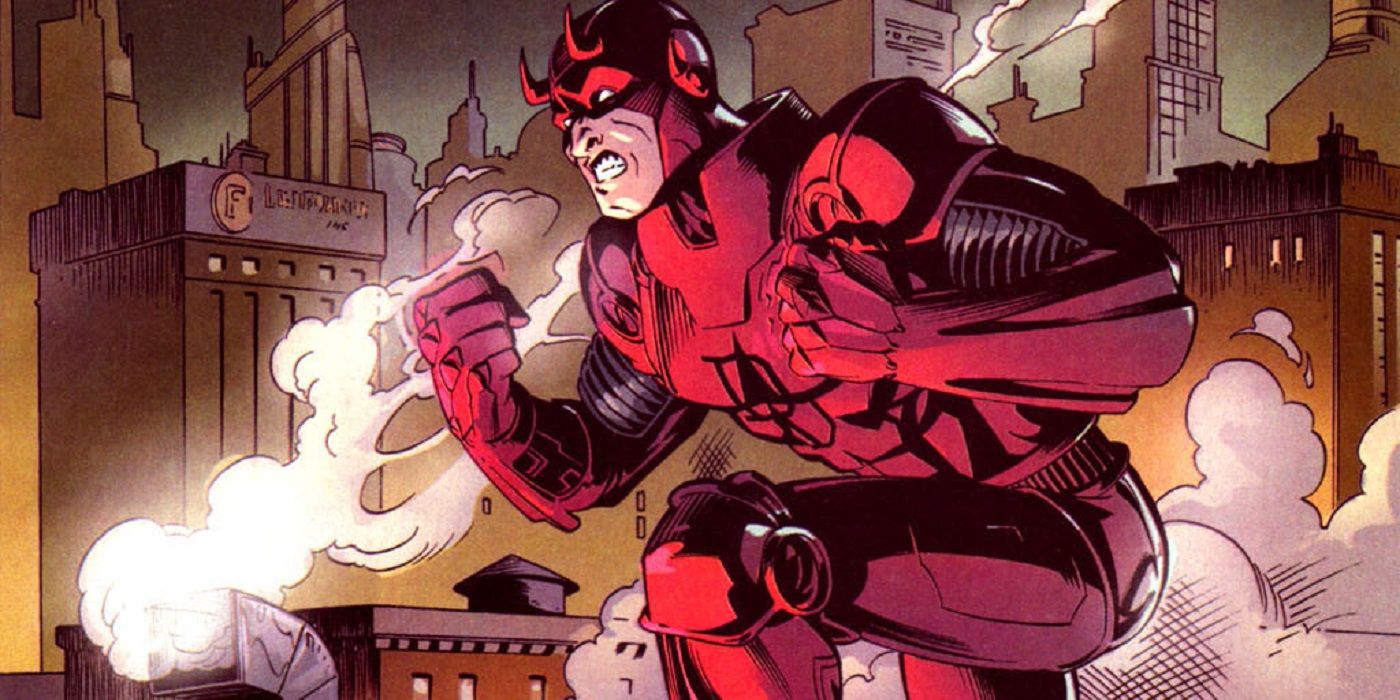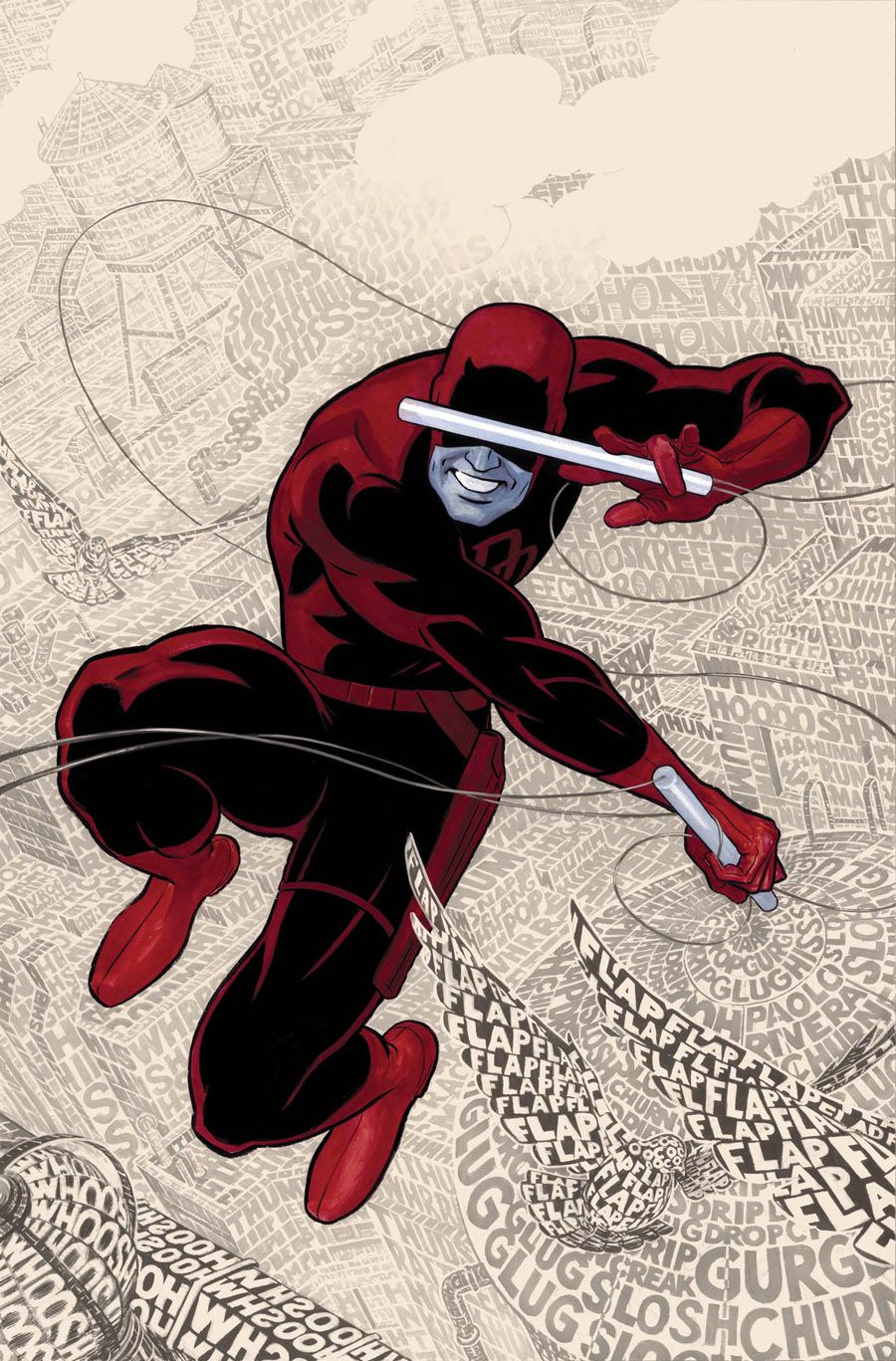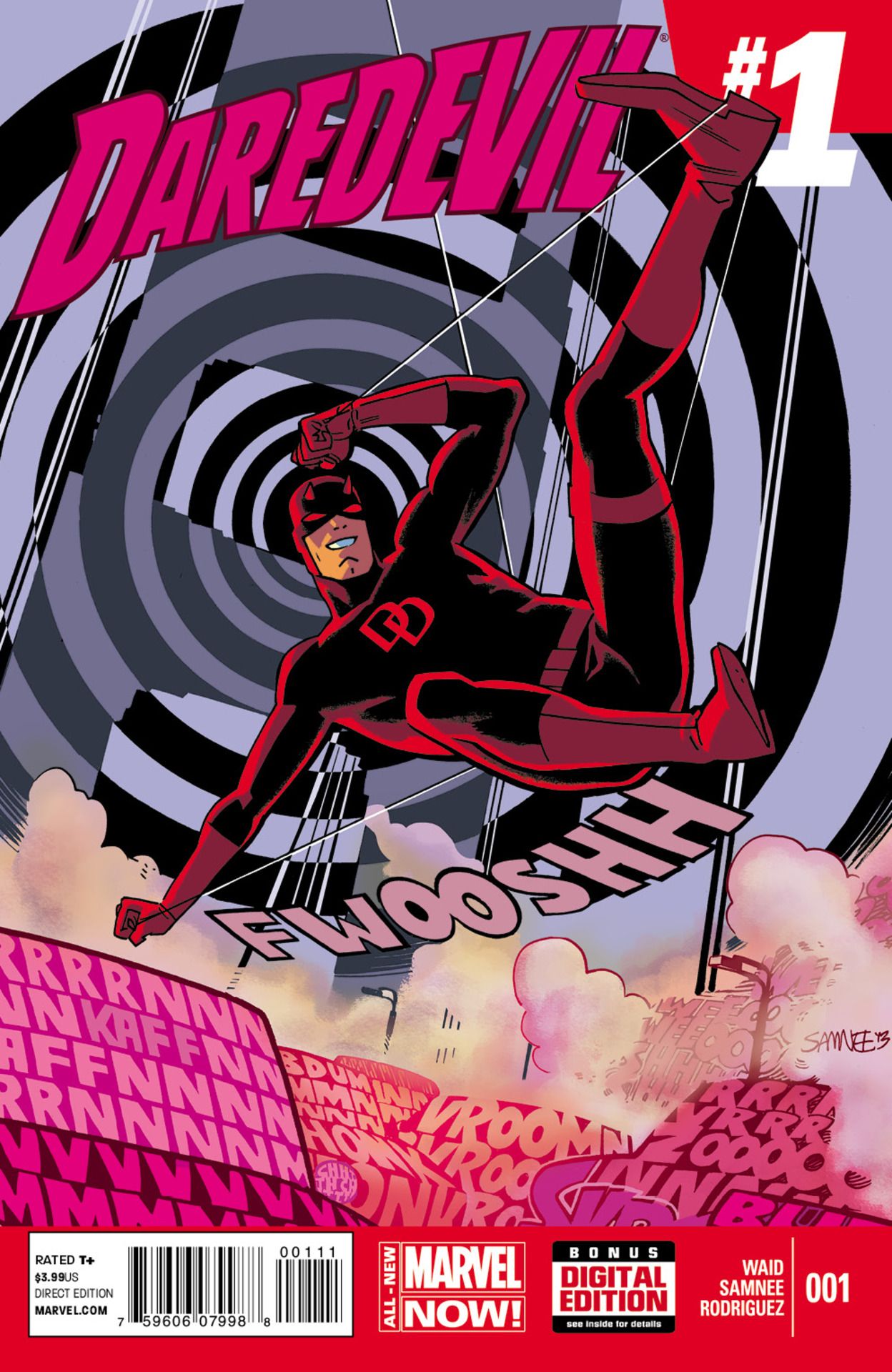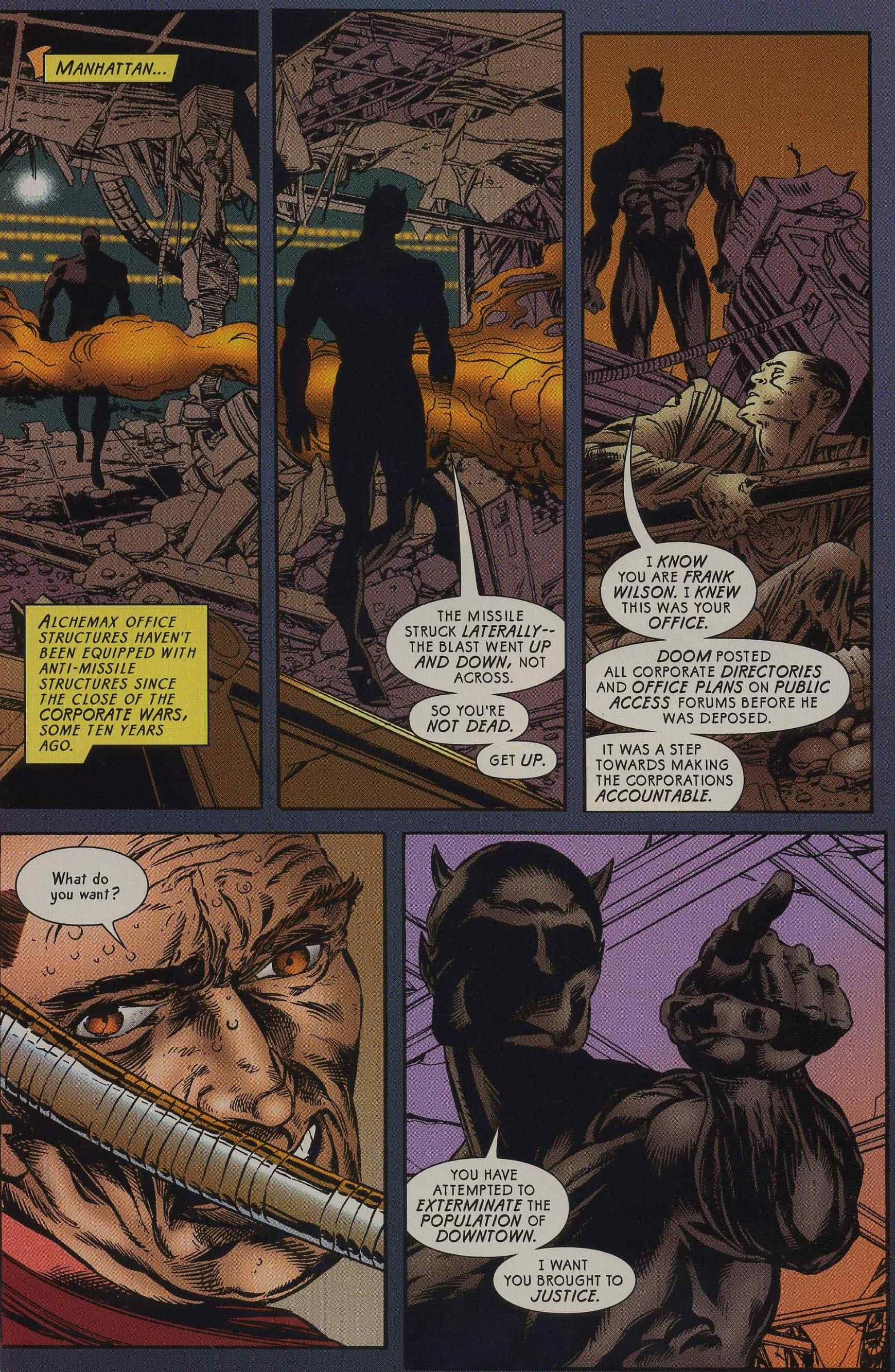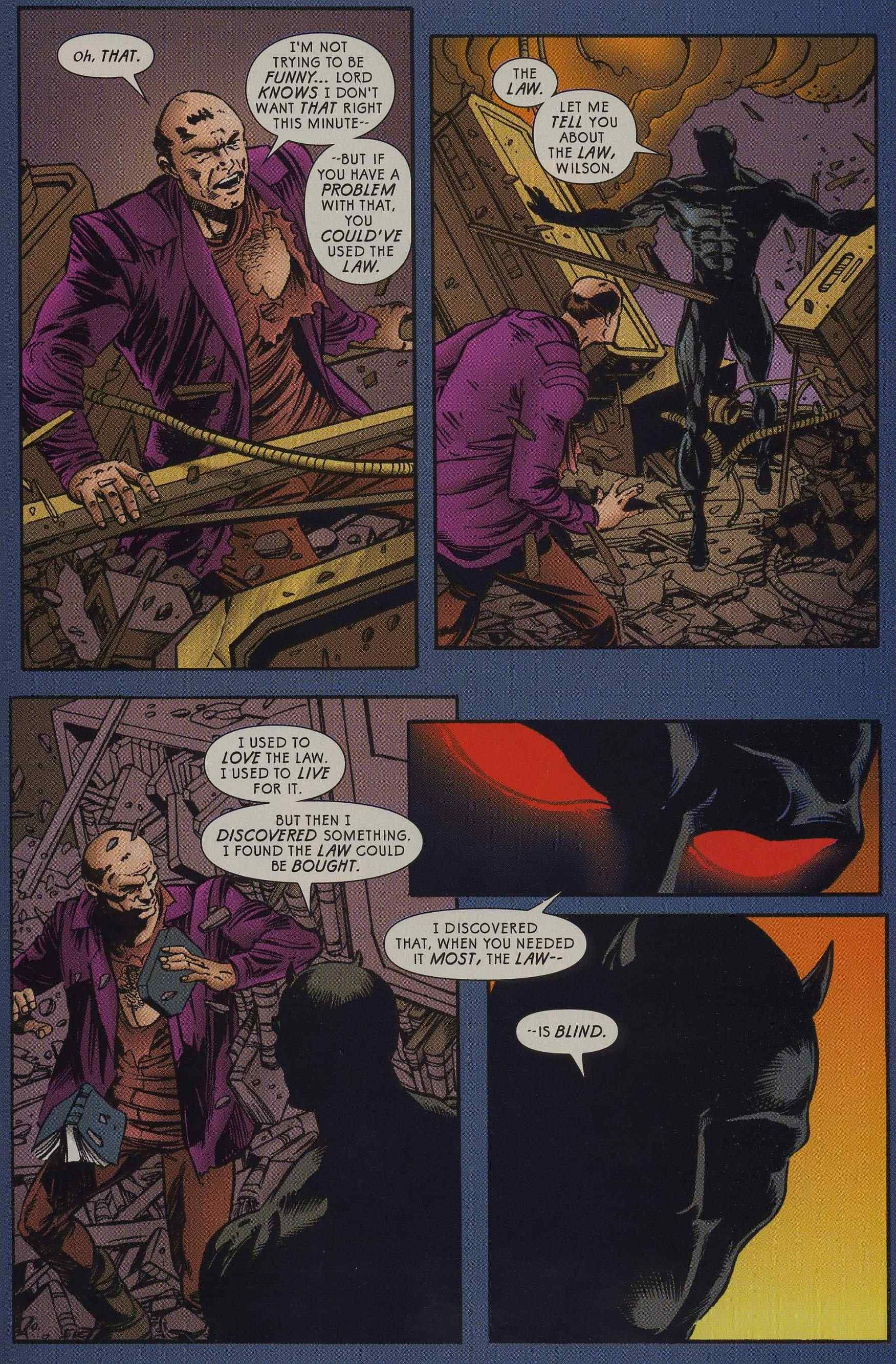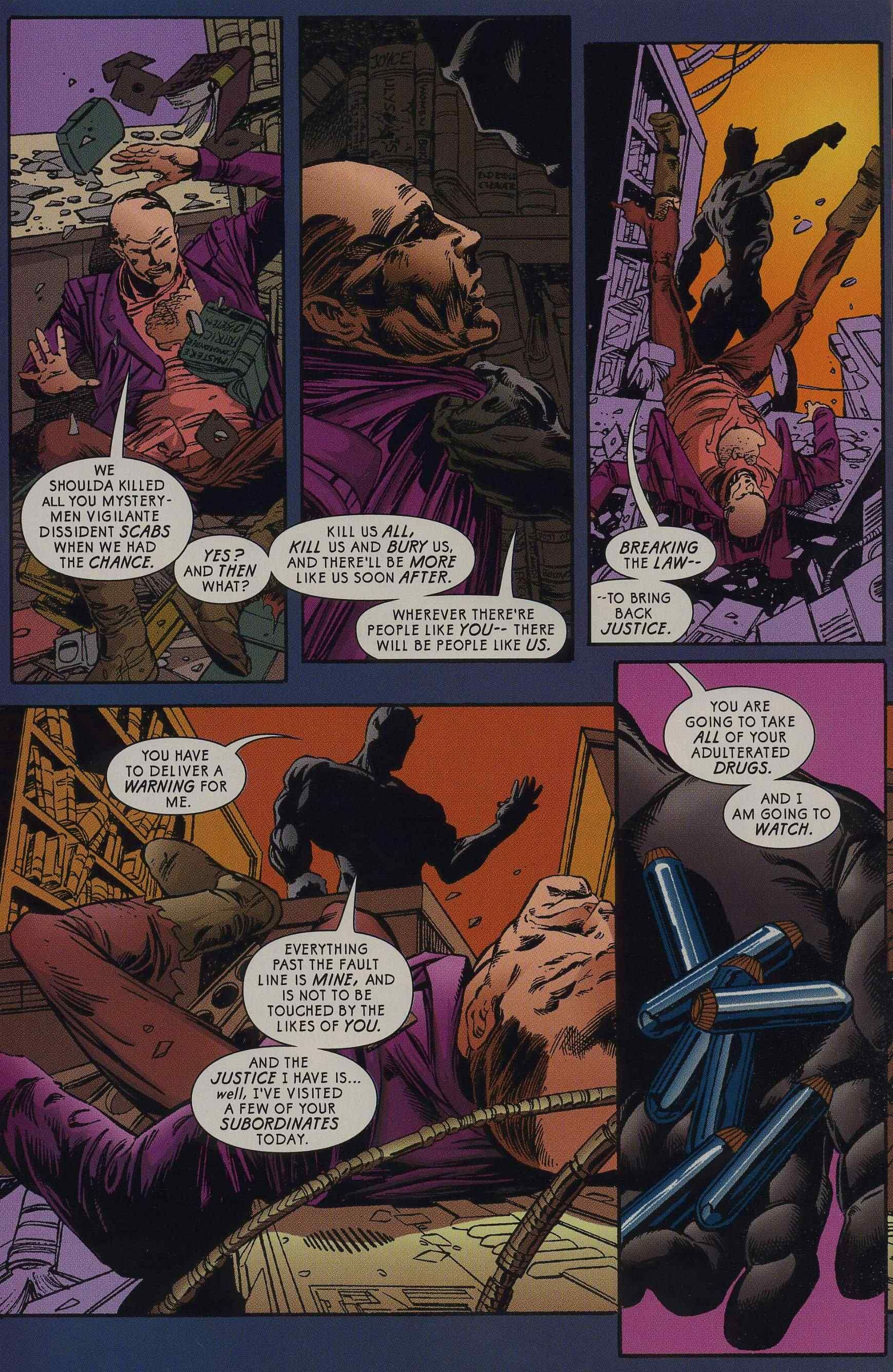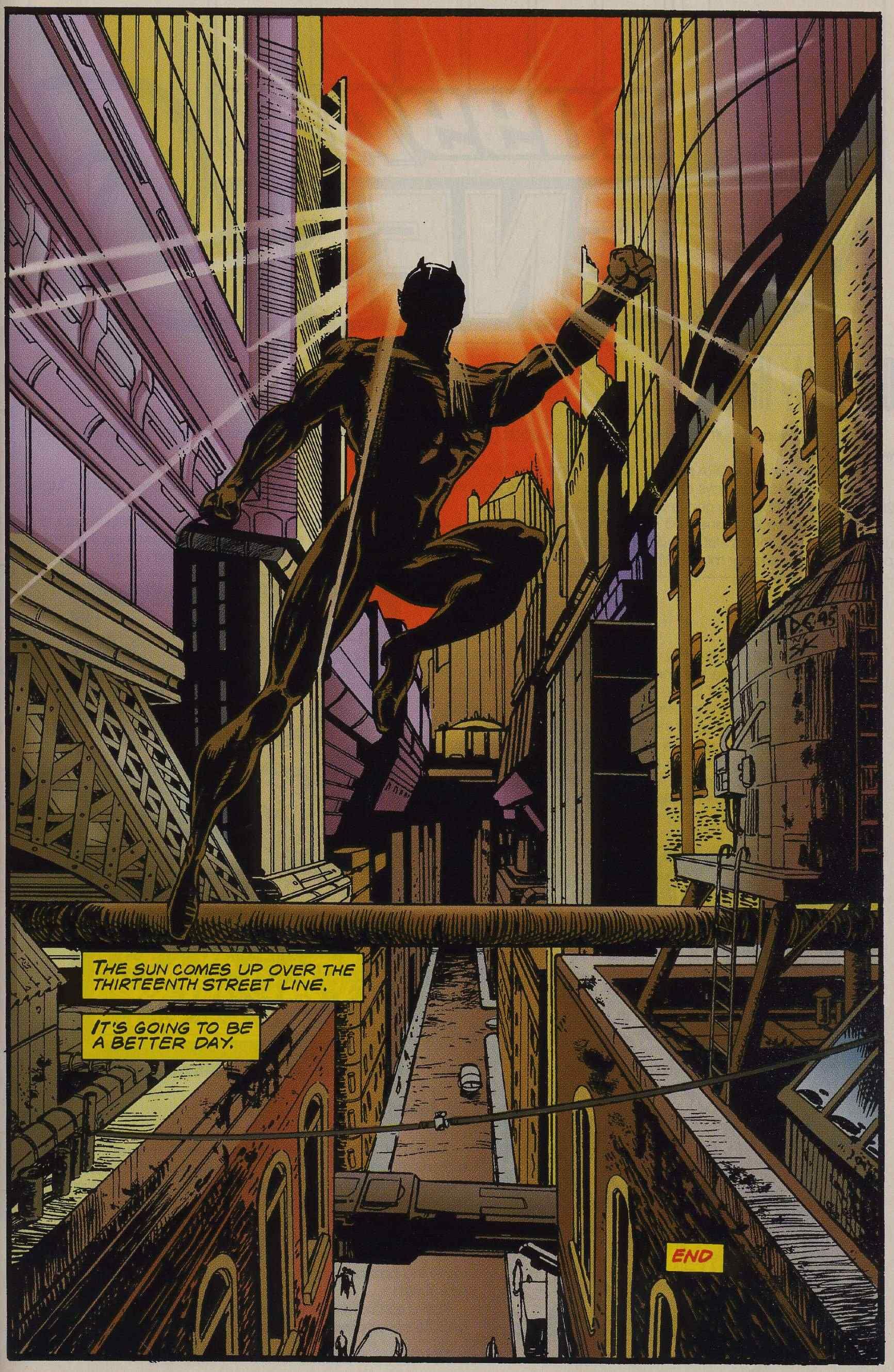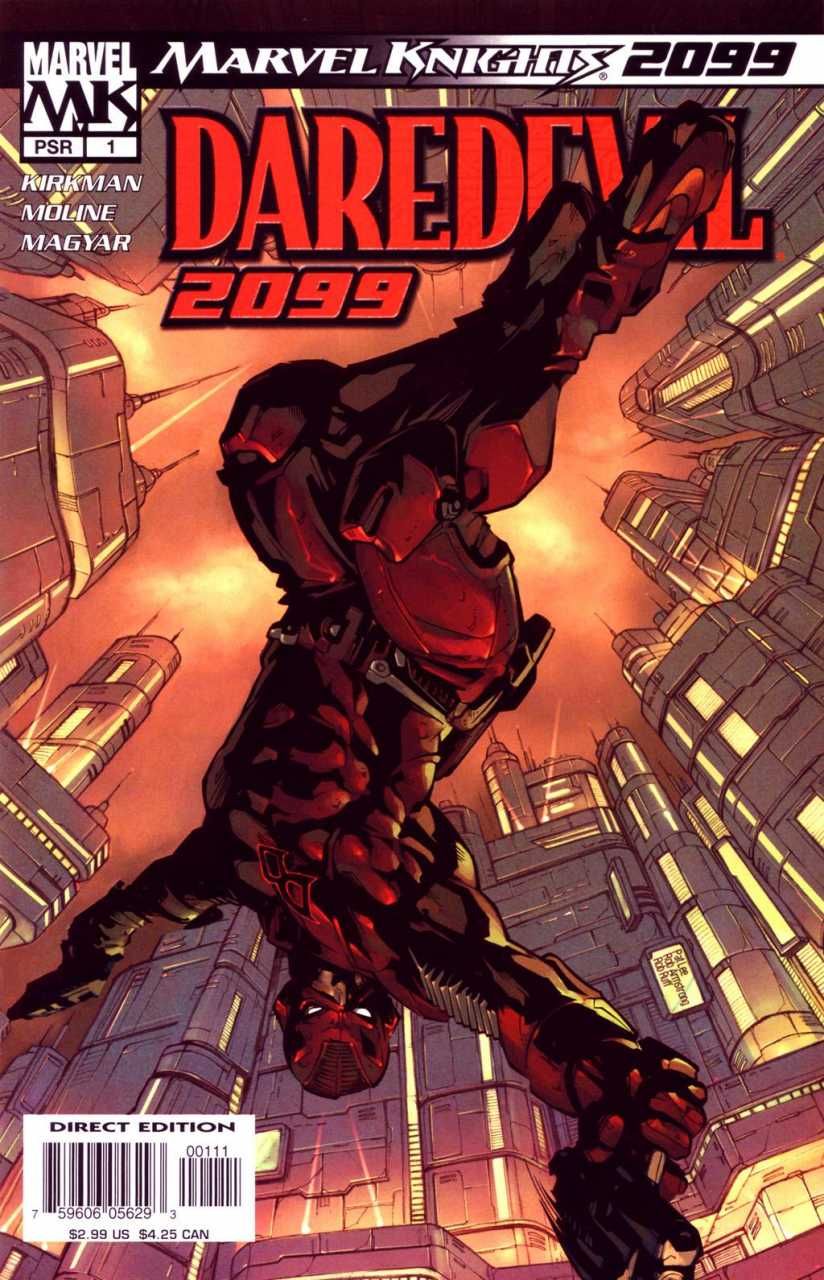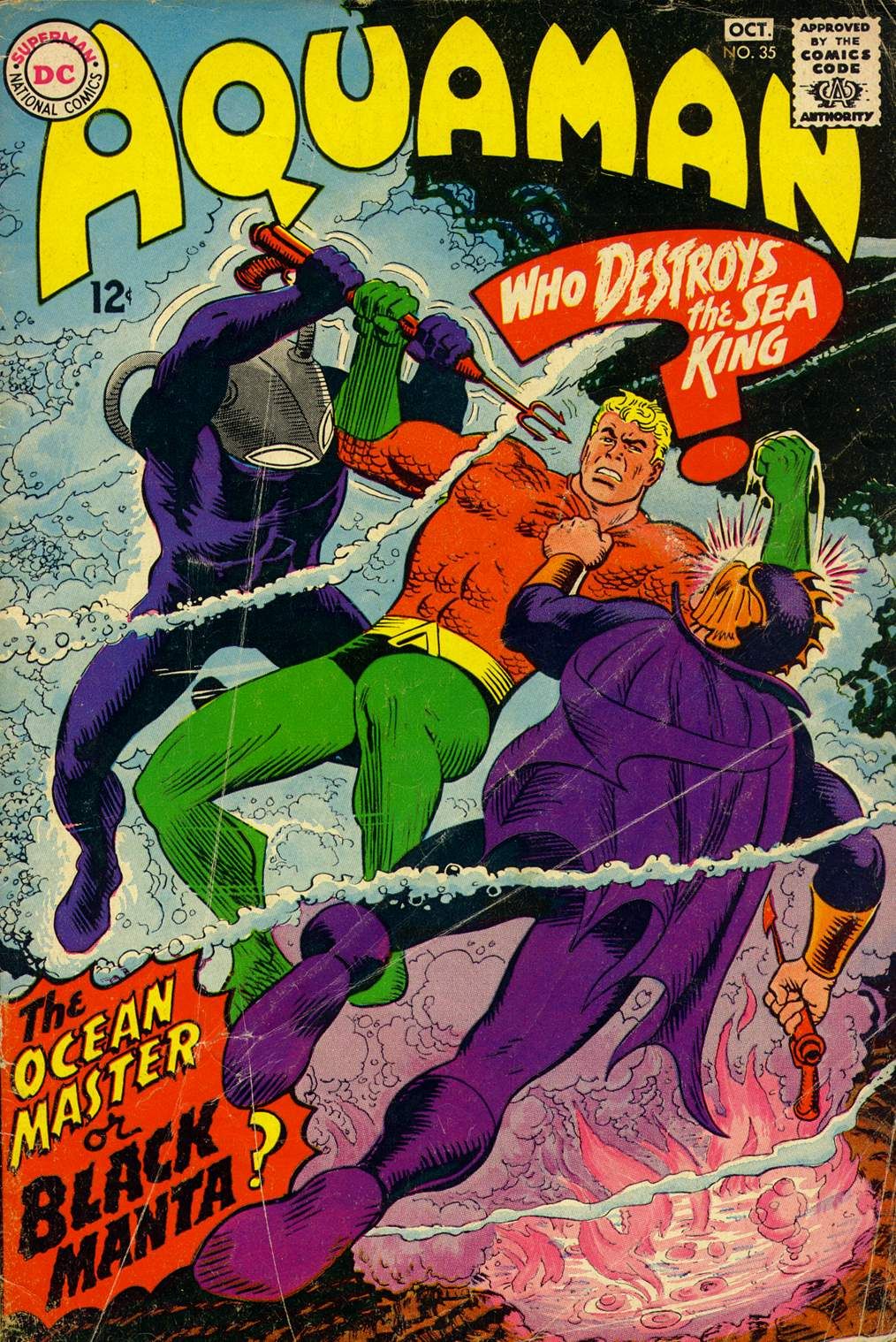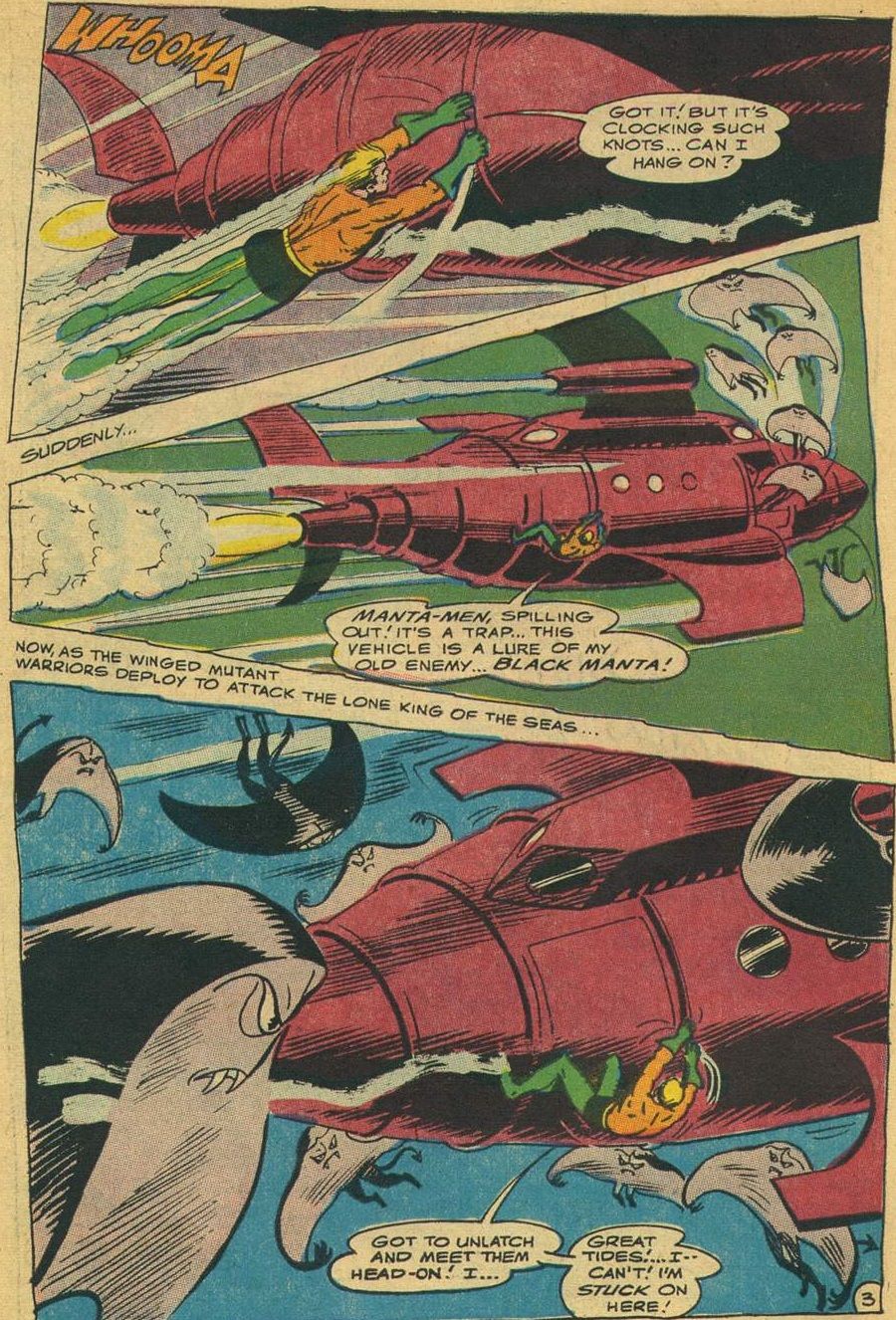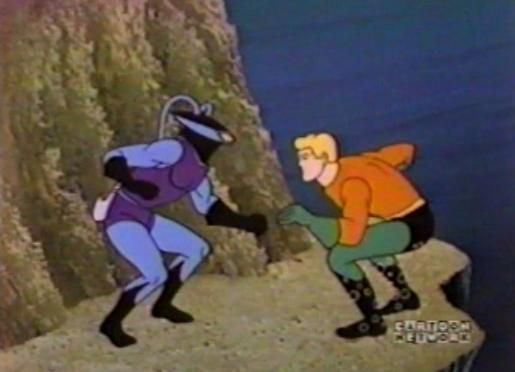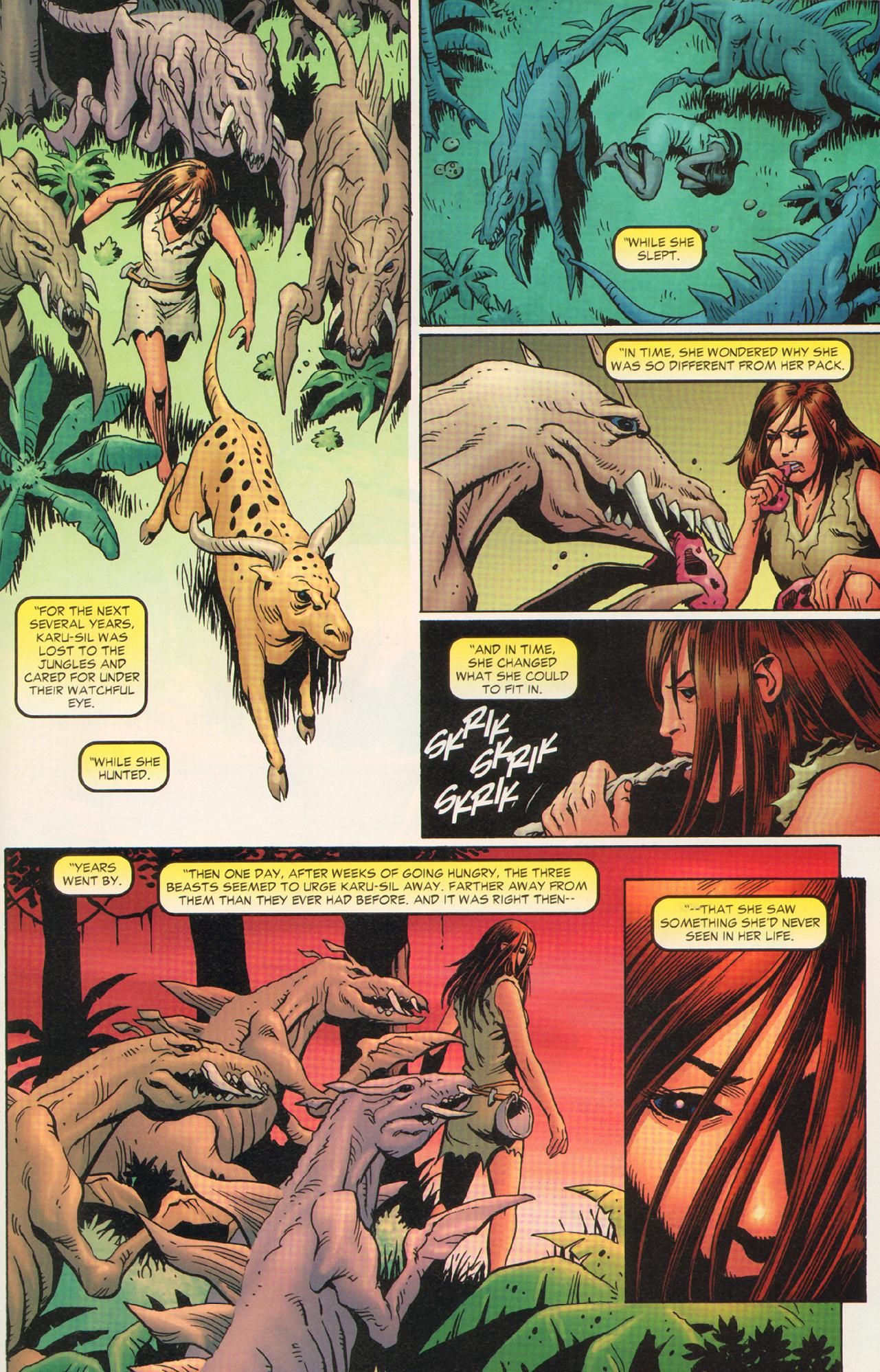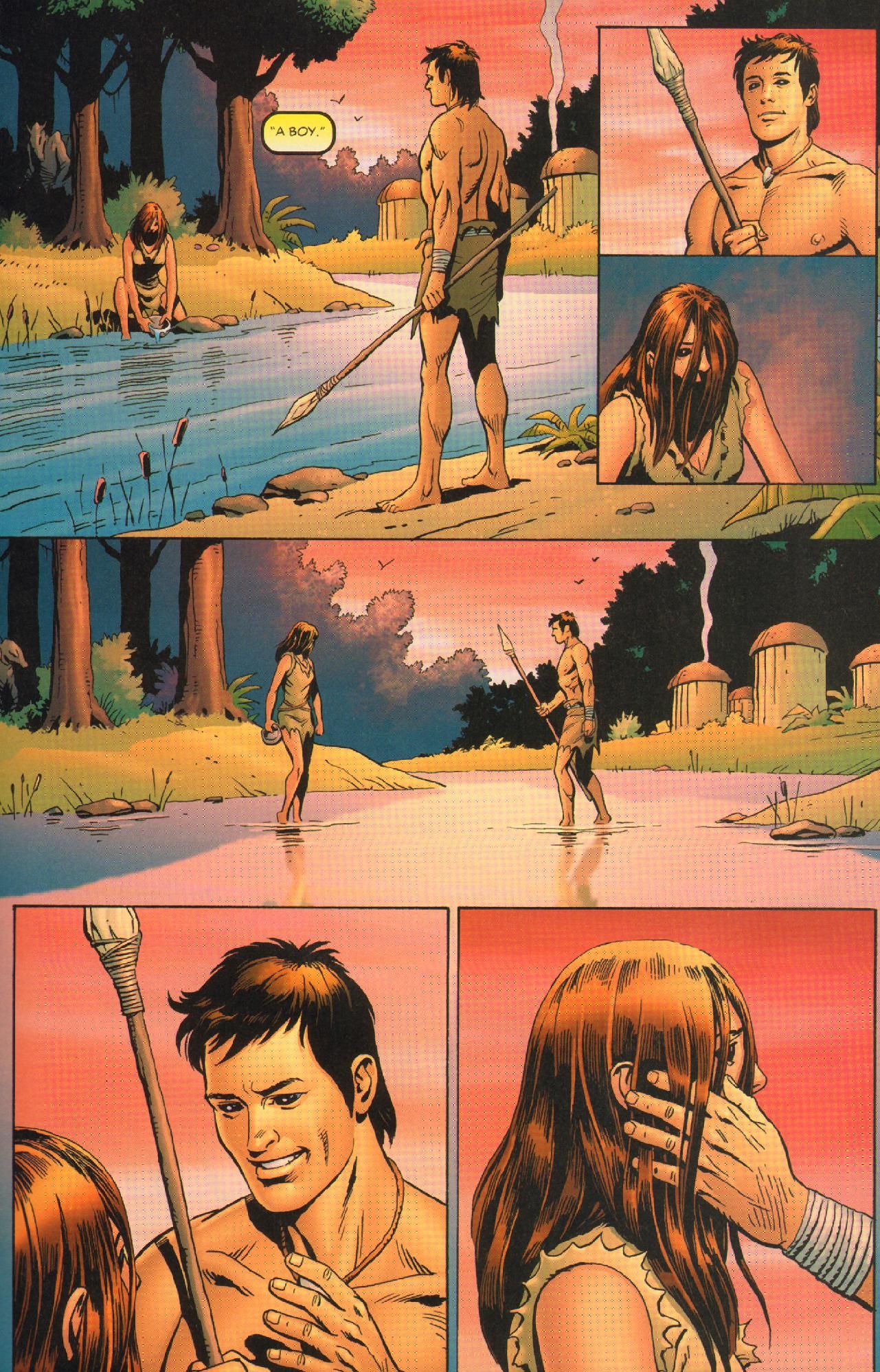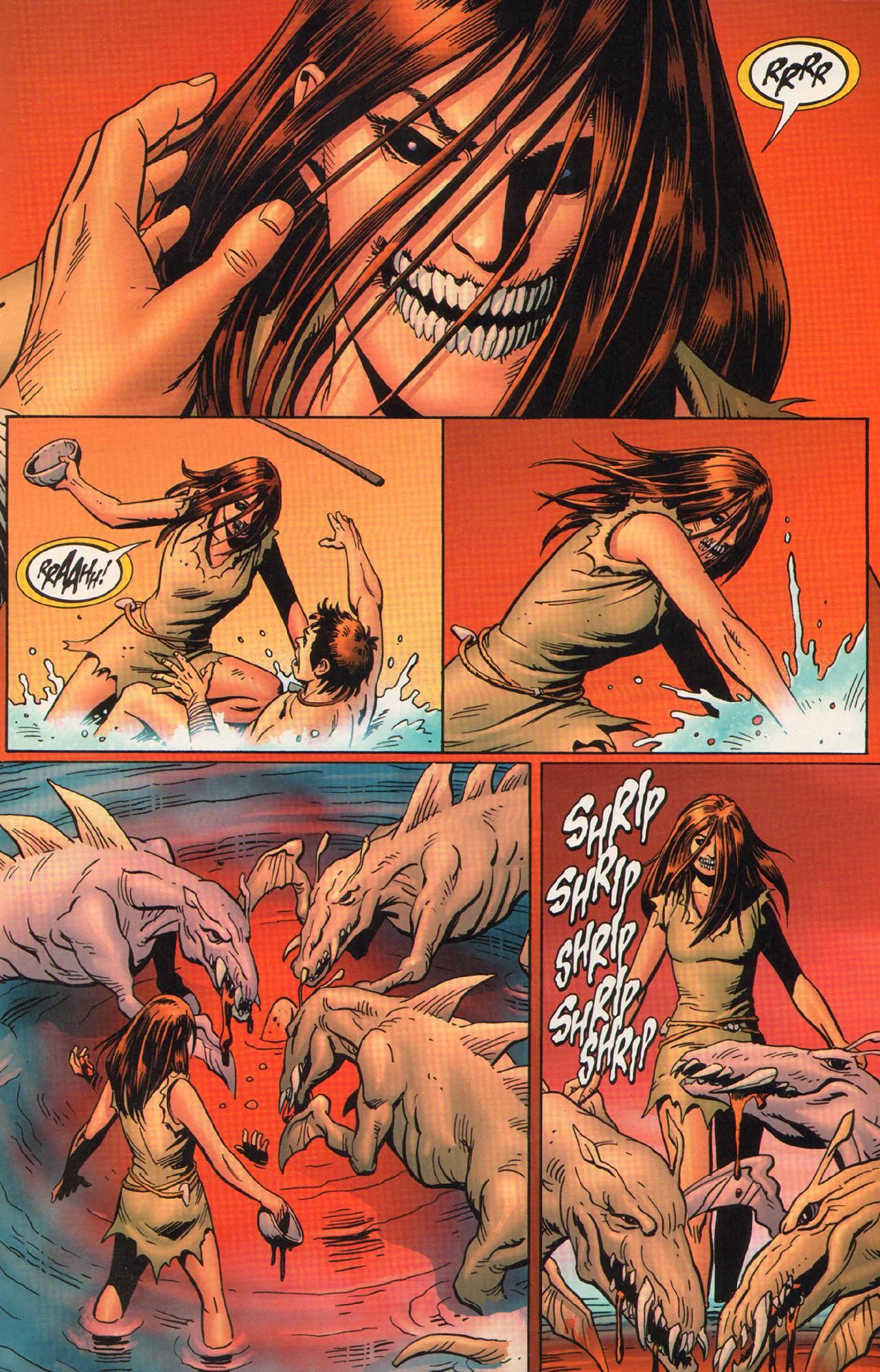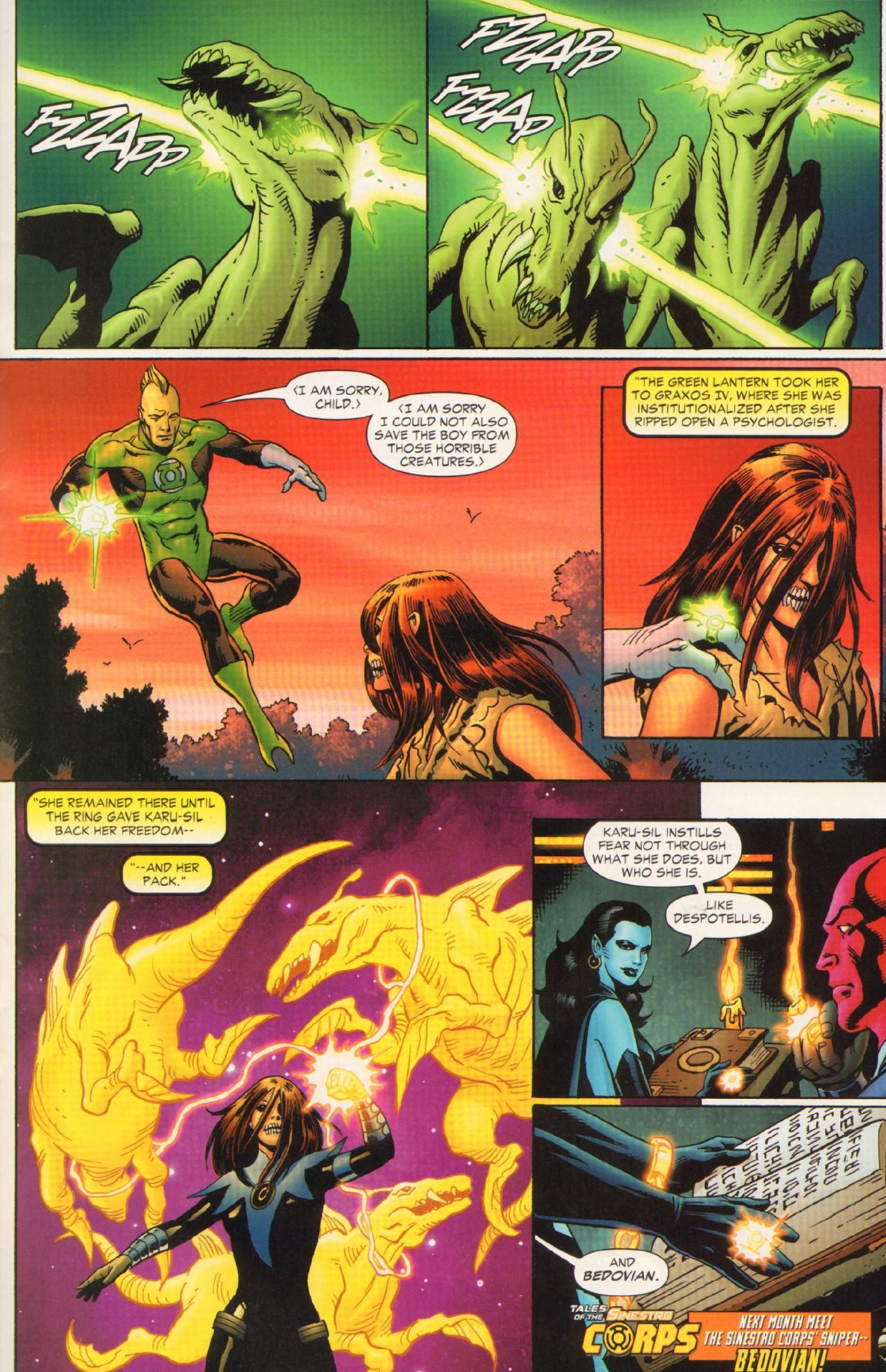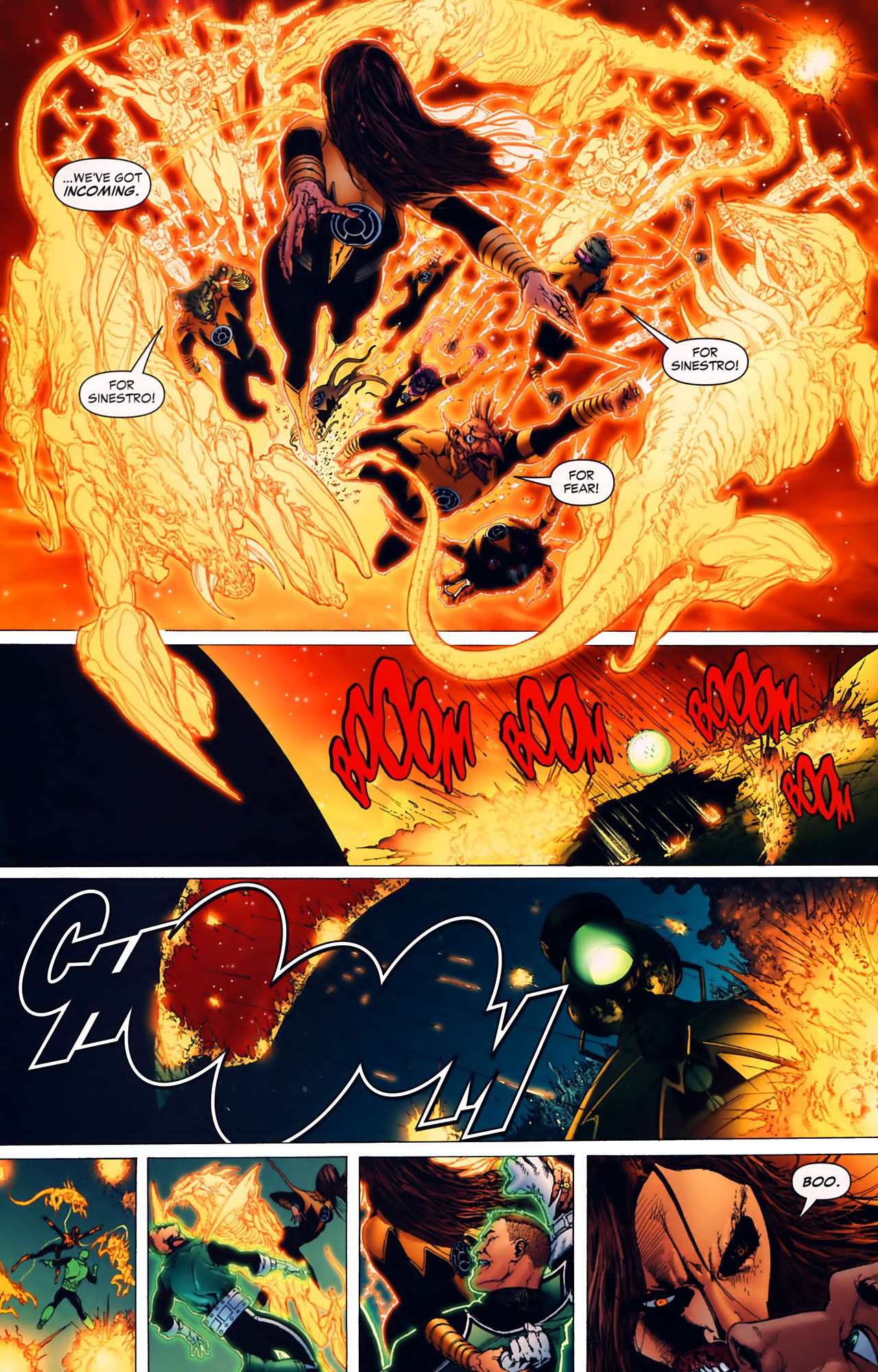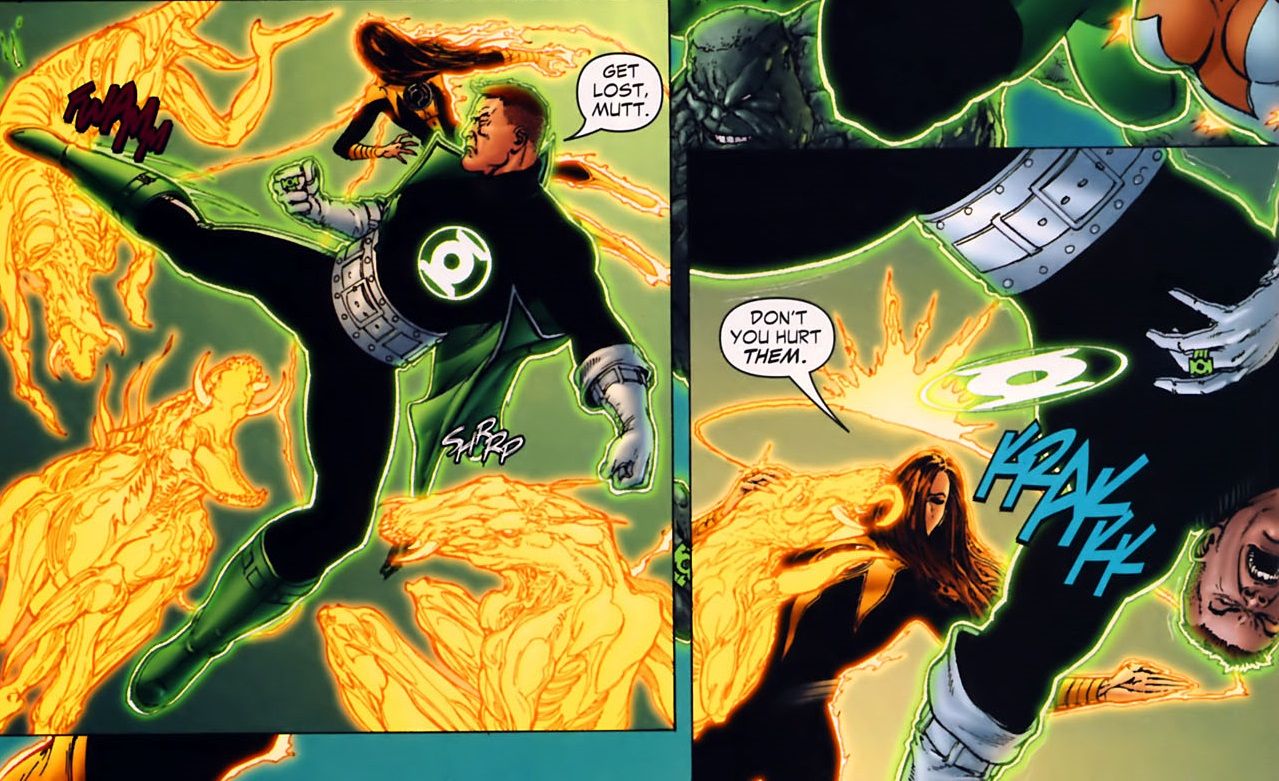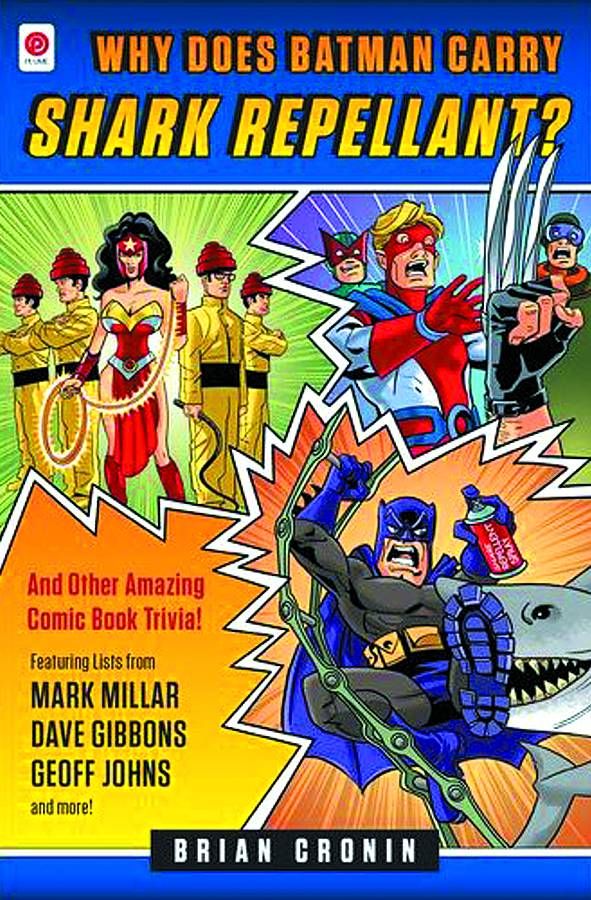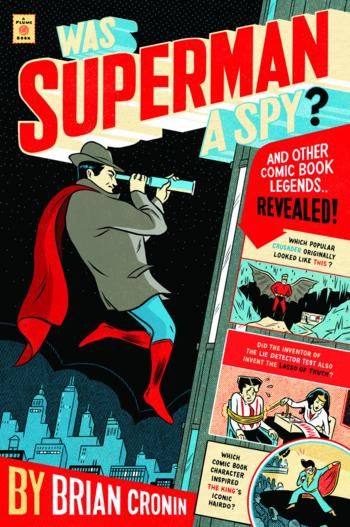Welcome to Comic Book Legends Revealed! This is the five hundred and ninety-seventh in a series of examinations of comic book legends and whether they are true or false. This week, did Mark Waid almost do a "Daredevil 2099" comic two decades before his classic "Daredevil" run? Was Black Manta invented for an "Aquaman" cartoon series? Plus, was one of the main members of the Sinestro Corps originally a Ghost Rider villain?
Let's begin!
COMIC LEGEND:
Mark Waid almost wrote a "Daredevil 2099" comic book series.
STATUS:
True
For a character who has had his fair share of classic runs, Mark Waid's stint on "Daredevil" was up there with the best of them.
As good as it was when it debuted with Paolo Rivera and Marcos Martin, it probably got even BETTER when Chris Samnee joined Waid on the title...
However, did you know that Mark Waid almost wrote "Daredevil" twenty years ago? But not Matt Murdock, but "Daredevil 2099"!
In late 1995, Marvel was trying to revitalize their 2099 line of comics. The line did not have much time left, but they tried one last push with some new characters and titles. One of the proposals for a new series was by Mark Waid, who made the following pitch for "Daredevil 2099" in September 1995...
Eric Nelson's father was the last of the big-time gamblers. A get-rich-quick wheeler-dealer. A daredevil. By the time Eric was twelve, Dad had come close to bankrupting the Nelson family fortune through a dizzying combination of reckless investments and sucker sports bets.
Desperate to maintain her place in society, Mom remarried within her class and raised Eric to never, never, never be like his dad. Social position and security uber alles; one does not risk one's status for anything.
Following in his new stepfather's footsteps, Eric Nelson (he kept his father's last name) became a corporate lawyer. After all, what's a safer bet in the world of 2099 than to choose a pro-corporate vocation? Soon, Eric's on the fast track. He's engaged to the daughter of one of Alchemax's head honchos, he's maintained his wealth, and so what if he's never heard the words pro bono? Three cheers for Corporate America. Only a sucker would stick his neck out for the little guy.
If pressed, of course, he'd phrase that a lot more diplomatically. In fact, he has his chance the day a seedy old man carrying a big carton under his arm wanders into Eric's office.
Dr. Gunderson has a story. In this advanced all-corporate age, he's one of the last true pioneers--a downtown research scientist who works on his own. Thus far, he's survived by patenting his small, low-profile breakthroughs and selling his patents to the corporations. He doesn't live high, but he gets by.
Years of non-interference had made Gunderson just a shade too cocky when it came to avoiding the "attention" of the corporations. Bad move. Once Gunderson filed a patent application for his ultimate discovery--a device developed to enhance the human senses--Alchemax came knocking, boom, boom, boom. Their electronic mole in the patent office flagged them to something potentially very interesting, and they'll get it from Gunderson one way or another.
A real lab rat, Gunderson has few close friends and fewer acquaintances--but one of them is Eric Nelson's fly-by-night father, who has recommended his son's services to Gunderson. In desperation, Gunderson pulls a crude helmet--his sensory-enhancement prototype--out of its big box and almost forces Eric to try it out before pleading with Eric to take his case and protect him.
Feh. Sure, Eric's impressed. He's even a little moved by the old man, who reminds him of Dad, and doesn't that make his head ache. But Gunderson might as well have asked Eric to swing from the rafters in his underwear. In order to take Gunderson seriously, Eric would have to fall for his tall tales of Alchemax's strongarm tactics. He doesn't. The corporations are a little faceless sometimes, sure, but they play by the rules, by the laws.
Clearly, Gunderson's exaggerating his plight. Eric advises the old man to accept Alchemax's I'm-sure-it's-fair bid and relinquish the tech. Gunderson, tempted to spit on Eric's shoes, mutters, "Thanks a million, daredevil," and leaves.
The next day, two things happen.
First, Eric hears the news of Gunderson's sudden suicide. An odd way to go, thinks Eric, for a man who still seemed to have plenty of vinegar in him.
Second, a big package arrives for Eric. He opens it in the privacy of his office. It's empty...except for a taunting note from Gunderson promising to teach Eric that the safe life isn't all it's cracked up to be. Not only does Eric get the creeps from this dead man's gift, he even pricks his finger nastily on a sharp corner inside the empty box.
And that was the last normal day Eric Nelson ever had.
Suddenly, Eric begins experiencing intermittent dizzy, almost hallucinatory spells. That's not much good for helping him fend off the flurry of Alchemax corporate goons who have begun to crawl all over his life. Surprise. Eric's under full Alchemax surveillance. After all, he received a box big enough to carry Gunderson's now-missing prototype--so where'd he hide the thing?
Eric's no dummy. He knows that the weird symptoms he's experiencing have something to do with the doc's sensory enhancements. And as Alchemax closes in on him, endangering him and everything he's worked for, trashing his personal and professional life--"How can they get AWAY with that?"--Eric goes probing and finds out just how much he's been physically affected.
Trolling the downtown area, Eric meets Gunderson's fairly hostile, fairly stunning former lab assistant, Carol Takagawa. Carol's actually amused that Alchemax is looking for a big, clunky prototype. That was a blind. The true tech is microscopic--nanomite technology that flows through the bloodstream to the brain, permanently enhancing the sensory nodes. Specifically, Eric's sensory nodes. That's right. They're bucking his system in a big, big way.
Last laugh. Gunderson hid his tech in a place no one would ever look, and in doing so, stripped the safe life away from Eric. Sure, he could go to Alchemax and confess all...if he doesn't mind them ripping his nanoteched brain out of his head for study. And they'll do that. Thanks to Gunderson, Eric now knows that.
Temporarily refuged in the downtown area, his senses mutating, Eric--through Carol--is introduced to the Maverick Underground, a downtown network of scientists and free thinkers just like Gunderson. Eric's brief journey through their lives, through their personal tales of being Crushed By The System, opens his eyes for the first time to the villainy of the corporations that plague the world of 2099. Now, using his new sensory abilities...dubbed, mockingly, "Daredevil" by Carol...Eric rises from the underworld of downtown to bedevil the megacorps and impose justice where the law fails.
In bringing Gunderson's killers to justice, Eric manages to restore his professional life...even though it's one he no longer always believes in. Still, maintaining it as a "front" will allow him to stay plugged in to the system and be increasingly vigilant to the crimes of the megacorps. He devoted the first half of his life to defending them...now he'll spend the rest of it bringing them down.
Amazing. You can read the full proposal here at Daredevil Resources.
Right around the time of Waid's proposal, Daredevil 2099 made his debut in "2099 A.D. Genesis" #1, written by Warren Ellis and drawn by Dale Eaglesham and Scott Koblish, presumably working off the same basic idea (just not formalized into a series proposal)...
Years later, in 2004, Robert Kirkman did a series of one-shots introducing 2099 versions of Marvel Knights characters and "Daredevil 2099" was one of them, drawn by Karl Moline and Rick Magyar...
That's the Daredevil 2099 that I used in the banner image. It just looked a little cleaner for a banner image than the one from "2099 A.D. Genesis" #1.
Thanks to DD Resources and Mark Waid for the great information!
Check out some entertainment and sports legends from Legends Revealed:
Did Harrison Ford Improvise His Famous “I Know” Line From Empire Strikes Back?
Did Star Trek Never Show Scotty’s Full Right Hand on the Show?
COMIC LEGEND:
Black Manta was created for the "Aquaman" cartoon series.
STATUS:
I'm Going With False
As we have seen a number of times over the years, including with Renee Montoya in particular (as I spotlighted in this old Comic Book Legends Revealed), just because a comic book character showed up in a comic book before showing up in a cartoon or a TV series does not mean that the comic book character was invented for the comic book series. Sometimes, like with Renee Montoya, the character showed up in the comic books to get people used to a new character before they showed up in a cartoon series based on the comic. However, the character itself was created for the cartoon.
This, then, brings us to the curious case of Black Manta.
Black Manta made his first appearance in 1967's "Aquaman" #35, by Bob Haney and Nick Cardy...
Interestingly enough, he's already described as one of Aquaman's "old enemies" in his first appearance...
The book is cover-dated September/October, so it likely came out some time around June or July.
Jut a few short months, on September 9, 1967, "The Superman/Aquaman Hour of Adventure" debuted, featuring new cartoon stories featuring Superman, Superboy, Aquaman and a guest DC hero, like the Atom or the Teen Titans.
The very first Aquaman story featured him fighting against Black Manta and his Manta-Men...
This naturally raises the question, which reader Chad W. did to me on Twitter very recently (see how quick your questions can be answered if you send them in, people?), of whether Black Manta was created for the cartoon series and then added to the comic or was adapted from the comic. It would seem to reason that the production period would be too small for the cartoon to see the comic and then adapt it. So what's up?
As it turned out, it was a bit of both. You see, Bob Haney wrote BOTH stories. "The Superman/Aquaman Hour of Adventure" was produced in CONJUNCTION with DC Comics, so there was a connection between the two media. Haney's editor on "Aquaman" was George Kashdan, and Kashdan was ALSO a writer on the cartoon show and a bit of a loosely defined producer, as well.
In his book, "The Best Saturdays of Our Lives", cartoon historian Mark McCray states that Kashdan specifically held back the introduction of Black Manta in the comic so it would come out right before the cartoon series (and due to the practices of the day, it would remain on the newsstands until October of 1967). I trust McCray and since Kashdan passed away a decade ago and Haney passed away before that, even, then McCray is the best that I've got.
So it looks like it was a case of Black Manta being invented for the comic, then adapted for the cartoon series, but the comic book debut being put on hold until the cartoon was ready to come out. Either way, Bob Haney was the creator of Black Manta and Nick Cardy designed his distinct look.
Thanks to Chad W. for the suggestion! Everyone else, feel free to also make suggestions!
Check out my latest TV Legends Revealed at CBR: Did the "Seinfeld" theme song have LYRICS?
COMIC LEGEND:
Sinestro Corps member Karu-Sil began life as a Ghost Rider villain.
STATUS:
True Enough for a True
In the months leading up to the "Sinestro Corps War", the "Green Lantern" titles would have back-up stories that would introduce new members of the Sinestro Corps.
In "Green Lantern" #19, Geoff Johns and Dave Gibbons gave us the story of Karu-Sil...
However, it was artist Ethan Van Sciver who had actually created the character. Here, he drew her and her dogs in "Sinestro Corps Special #1...
Reader Wally S. wrote in to ask if it was true that Van Sciver intended her to be a Ghost Rider villain. The answer is a little bit yes, a little bit no. Here is how Van Sciver described the character to Newsarama back in the day, "With Karu-Sil, I had the idea for Ghost Rider. If I ever did Ghost Rider, she was going to be a Ghost Rider villain. And I just mentioned the idea to Geoff [Johns], and we turned her into part of the Sinestro Corps." "She's got animals all around her. She's a human carousel. So Geoff called her Karu-Sil and came up with her origin."
Van Sciver then told "Wizard Magazine", "I think I wanted her to be a Batman character. A beautiful, ghostly woman orbited by horrible dead animals tied to her like a Maypole. The animals became aliens and she became a natural addition to the Sinestro Corps.”
Odds are Van Sciver thought, "Oh hey, this would be a fun Ghost Rider villain. Well, I'm not drawing Ghost Rider, though, and won't be in the foreseeable future, so I'll use her elsewhere" and had even already adapted her to Batman before then having her be a Green Lantern villain!
It's tough. But I guess I slightly lean true here.
Thanks to Ethan Van Sciver for the quotes and thanks to Ben Morse for the Wizard interview (I don't know who did the Newsarama interview).
Okay, that's it for this week!
Thanks to the Grand Comics Database for this week's covers! And thanks to Brandon Hanvey for the Comic Book Legends Revealed logo!
Feel free (heck, I implore you!) to write in with your suggestions for future installments! My e-mail address is cronb01@aol.com. And my Twitter feed is http://twitter.com/brian_cronin, so you can ask me legends there, as well!
Here's my most recent book, Why Does Batman Carry Shark Repellent? The cover is by Kevin Hopgood (the fellow who designed War Machine's armor).
If you want to order a copy, ordering it here gives me a referral fee.
Follow Comics Should Be Good on Twitter and on Facebook (also, feel free to share Comic Book Legends Revealed on our Facebook page!). Not only will you get updates when new blog posts show up on both Twitter and Facebook, but you'll get some original content from me, as well!
Here's my book of Comic Book Legends (130 legends. -- half of them are re-worked classic legends I've featured on the blog and half of them are legends never published on the blog!).
The cover is by artist Mickey Duzyj. He did a great job on it...
If you'd like to order it, you can use the following code if you'd like to send me a bit of a referral fee...
Was Superman a Spy?: And Other Comic Book Legends Revealed
See you all next week!

